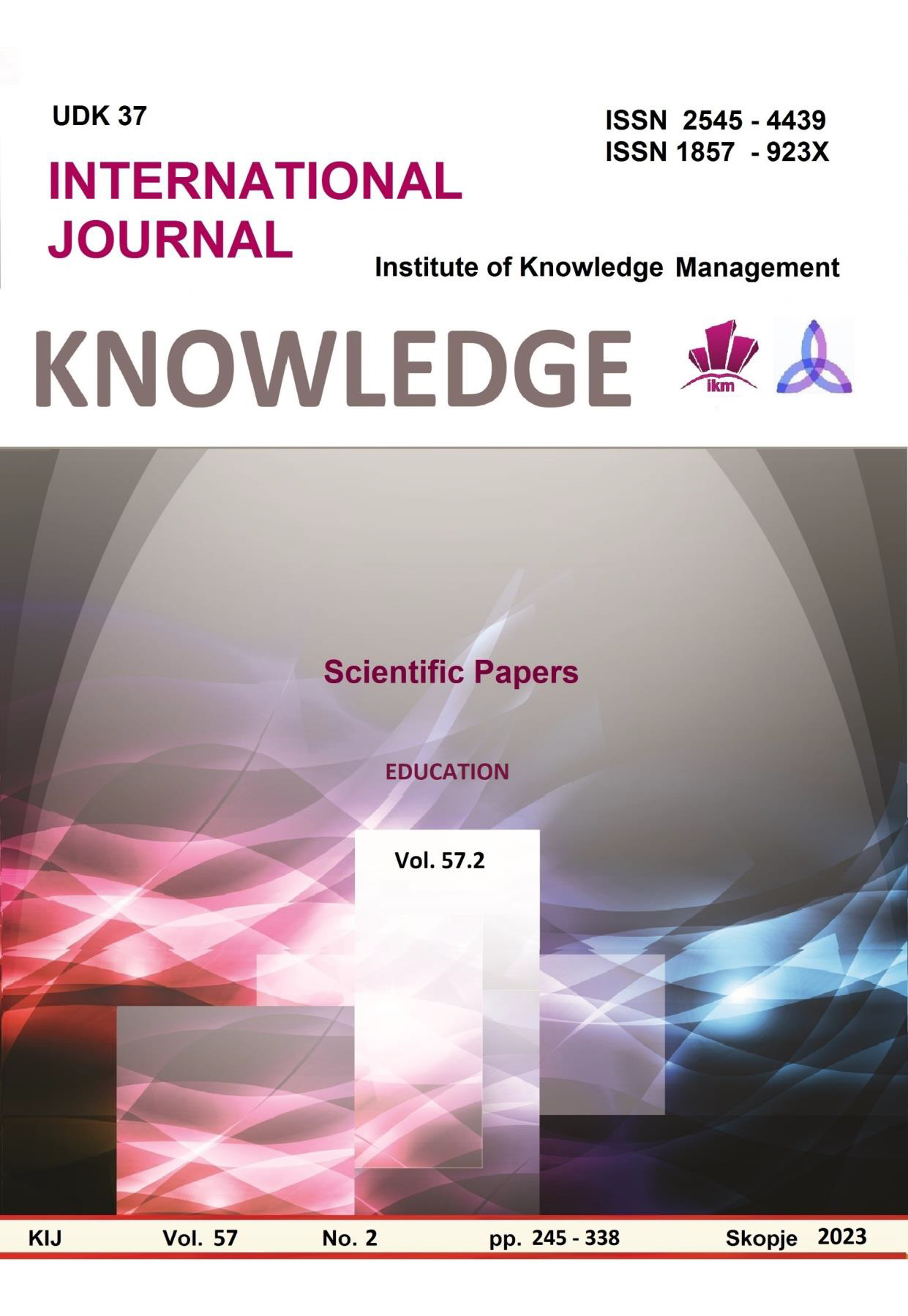EXPERIMENTAL MODEL WITH CREATIVE TECHNIQUES TO PROMOTE HAPPINESS IN CHILDREN
Keywords:
happiness, creative techniques, art-pedagogical model, pedagogical process, primary school ageAbstract
The article presents an experimental model that aims to stimulate the feeling of happiness in children in the initial stage of school education. The model is constructed on the basis of individual aspects of life, set as symbolic themes that can be acted upon to stimulate feelings of happiness. The impact is achieved through the visual perception and its association with the set topic. The emotional attitude of children regarding aspirations and goals, connectedness with the other, curiosity about the world, the choice to be yourself, kind gestures, the ability to look at life on the bright side, health care, curiosity is explored. For this purpose, creative techniques are used to encourage children's imagination and achieve an emotional charge through art and its experience. Children are expected to be provoked to create, expressing the feelings they feel at the moment, connecting these emotions with the feeling of happiness. Applied creative techniques are borrowed from popular means in isotherapy such as painting, appliqué, decoration, modeling and others.
Although happiness is difficult to define, it is often described as a positive state of mind and satisfaction with life. The present study does not claim to be an exhaustive discussion of the concept of happiness, but accepts the definition of a number of authors who characterize it as an ability rather than a character trait. Hence the belief that the feeling of happiness can be influenced in order to be consciously achieved as a state.
The proposed experimental model is based on the idea that certain life circumstances can influence happiness - that is, happiness is seen as the achievement of certain positive emotions derived from life attitudes and state of being.
2. Methodology: the article presents an experimental art-pedagogical model. Its purpose is to assist in the process of promoting happiness in elementary school-aged children.
3. Results of the research: It is assumed that the applied, experimental model will have a favorable effect in the process of stimulating children's sense of happiness and well-being.
4. Conclusion and recommendations: The proposed art-pedagogical model seeks to influence the way in which children perceive certain aspects of life, creating positive feelings for them. A positive emotional attitude can be of particular benefit in the pedagogical process for children of primary school age. Feelings of joy and satisfaction support learning by creating conditions for better receptivity of learned knowledge, skills and attitudes on the part of students.
References
Ангелова, Л. (2019). Динамика в развитието на изобразителните способности на децата в предучилищно и начална училищна възраст, София
Борманс, Л. (2021). Щастие за деца
Легкоступ, П. (2010). Изобразително изкуство. Възпитателни, терапевтични и корекционни аспекти, София
Митева, П. (2022). Емоционална интелигентност и управление на професионалния стрес при учители. Арт педагогика – стратегии и техники, София
Моите занимания в гората, (2022). „Арт Етърнал Синема“ ООД, София
Моите занимания в природата, (2022). „Арт Етърнал Синема“ ООД, София
Попов, Т. (2004). Терапия и профилактика чрез изкуство, „Образование“
Стаматов, Р., & Сарийска, С. (2022). Позитивна психология, „Хермес“
www.novavizia.com/teoriya-za-shestte-osnovni-emotsii-na-ekman, 2023
www.novavizia.com/emotsionalna-inteligentnost/, 2023
https://www.gnezdoto.net/promeni-sebe-si-promeni-jivota-si/3071-25-zakona-na-shtastieto, 2023





